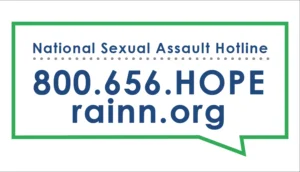https://www.usatoday.com/story/news/pol ... 827171002/
26 years in, the Violence Against Women Act hangs in limbo — while COVID-19 fuels domestic violence surge
8-9 minutes
This story was published in partnership with The 19th, a nonprofit, nonpartisan newsroom reporting on gender, politics and policy.
As COVID-19 appears to be fueling spikes in domestic violence, the Violence Against Women Act — the landmark legislation that enshrined federal protections and support for survivors — has emerged as a focal point of Joe Biden’s presidential campaign. But for now, the law remains in a legislative limbo that could have severe health impacts — particularly during the pandemic.
This month marks 26 years since the Violence Against Women Act (VAWA) was signed into law. Biden and his campaign surrogates have touted the law, which Biden sponsored when he was a Delaware senator as a centerpiece of his commitment to women. Between 1994 and 2010, intimate partner violence has dropped by more than 60 percent, according to the Department of Justice, a precipitous decline that experts at least partially attribute to the law’s passage.
Already, per the Centers for Disease Control and Prevention, about 1 in 4 women and 1 in 10 men will experience some form of intimate partner violence in their lifetimes. For associated homicide, Black and Native women are at greater risk. The government data does not disaggregate sex from gender, or account for nonbinary people. What research exists, though, suggests that transgender people also face high rates of intimate partner violence.
Efforts by U.S. House Speaker Nancy Pelosi, D-Calif., and other supporters to reauthorize the Violence Against Women Act, which provides funding and grants for a variety of programs that tackle domestic abuse, have stop advancing since 2019.
But efforts to reauthorize VAWA, which requires legislative renewal every five years, have stalled since 2019, largely due to disputes over a provision that would prohibit gun purchases by people who have been convicted of domestic violence against a partner they are not married to, and do not live or co-parent with. (If an abusive partner has access to guns, that heightens the risk of abuse translating into homicide.) President Donald Trump has not focused on either the legislation or the issue of domestic violence, whether from the White House or the campaign trail.
For now, there is still money backing VAWA’s signature grant programs, which has awarded more than $8 billion since 1995. That includes dedicated funding for resources like rape crisis centers and survivor advocates, as well as discretionary funds that support, for instance, efforts to combat dating violence on college campuses or facilitate outreach to underserved communities. But those resources could dry up if the law isn’t renewed or if money isn’t authorized through some other funding stream. And that’s just as the pandemic is heightening the need.
“Right when more services are needed, they’re [at risk], and that’s a problem,” said Victoria Nourse, a professor at Georgetown Law who played a major role in drafting the 1994 law.
The coronavirus pandemic has, early data suggests, contributed to a significant increase in domestic violence, including domestic homicide. The research is still preliminary, and domestic violence is chronically underreported, but it appears that domestic violence has grown in both prevalence and severity. There are increased calls to domestic violence hotlines, which are expected to continue through the end of the year, and more emergency calls to police.
Rape crisis centers have also reported increases in calls. Anecdotal evidence suggests women’s shelters are turning survivors away because they don’t have room for more people, said Monica McLaughlin, policy director for the National Network to End Domestic Violence.
Plus, a study from the Boston-based Brigham and Women’s Hospital found an increase in people visiting because of physical harm sustained through intimate partner violence, including internal organ damage — a sign, the researchers suggested, that people were coming to the hospital later than they otherwise might have after experiencing abuse.
Much of the data comes from the first few months of the national emergency. But, especially since the pandemic is expected to worsen in the fall, the problem will only worsen, researchers worry.
Domestic violence:Her neighbors called for help. When cops showed up, they attacked a domestic abuse victim.
“It’s the hidden pandemic at the back of the pandemic,” said Bizu Gelaye, an assistant professor of psychiatric epidemiology at the Harvard T.H. Chan School of Public Health. “This is in fact the time when we need stronger legislation. We need to have a stronger system.”
Even before COVID-19, domestic and sexual violence both constituted a public health crisis, said Vanessa Volz, the executive director of Sojourner House, a Providence-based organization that provides services for survivors of domestic abuse.
But the pandemic created an “unprecedented need” for services, she said — from calls to the organization’s hotline, to demand for counseling services to help with emergency housing and shelter. Even survivors who have already settled into new safe housing are, thanks to the economic downturn, facing new challenges in making rent.
In terms of financial resources, the federal gridlock will likely take some time to be felt. For now, Volz said, her organization hasn’t been harmed by the VAWA expiration. They rely on a mix of private donations and federal dollars.
But the COVID economy means private fundraising is a far greater challenge than it once was. If the federal program isn’t re-authorized, that could pose real budgetary problems.
For adults and children suffering from domestic violence, a "shelter at home" order can mean being trapped in a residence with an abusive individual. There are still options available for those individuals, and many of those are just a phone call away.
The surge in violence follows an established pattern. National disasters have previously been shown to lead to higher rates of intimate partner violence, both psychological and physical abuse. Experts say that the economic stress created by the pandemic is also a likely contributor to heightened domestic violence rates. Meanwhile, the public health requirement to stay home and the shutdowns of many businesses and offices leave those experiencing violence with fewer places to escape.
“People who are in abusive relationships, their out might have been going for a walk, or going to a store, or going to work,” said Zaida Hernandez, 53, a Rhode Island-based domestic violence survivor who now works with people currently experiencing abuse. “Now, there’s no out. The abuser can use it against them.”
There are long-term implications. Beyond the impact of immediate violence, research suggests that domestic abuse can heighten the risk of long-term cardiac problems. There is the psychological burden too. Symptoms of anxiety, depression and post-traumatic stress disorder can manifest for years after.
Even for long-term survivors who aren’t in an abusive relationship, the pandemic can stoke PTSD. Isolating at home, with no avenue of escape, invokes triggering feelings of losing control, Hernandez said.
She has had a restraining order against her abuser since the 1990s. But in the past few months, she’s found herself experiencing nervousness, pacing and “this sense that something is going to happen.” She checks the doors and puts away any kitchen knives — often a weapon her abuser used to threaten her.
She has access to mental health care, which has proven essential in managing those symptoms, she said. But many survivors don’t. In fact, expanded access to such treatment was one of the additions included in the 2019 version of VAWA still waiting in the Senate. The bill would also have addressed loopholes in punishing sexual violence committed on tribal lands, and make it easier for survivors to secure housing.
Those issues are especially salient now, as the pandemic makes it harder to access resources like housing, and as women face the brunt of the economic downturn. But, Volz said, they will remain relevant long after COVID-19 has been addressed.
“Domestic and sexual violence was a public health crisis before COVID,” she said. “This is ongoing work that we have to do — it’s not temporary.”
26 years in, the Violence Against Women Act hangs in limbo — while COVID-19 fuels domestic violence surge
Moderator: admin


